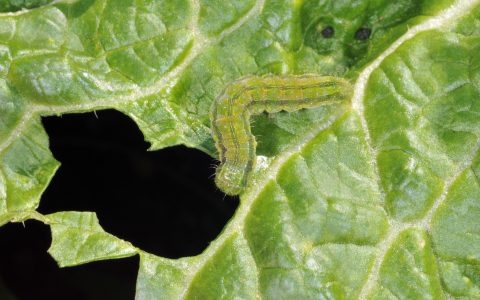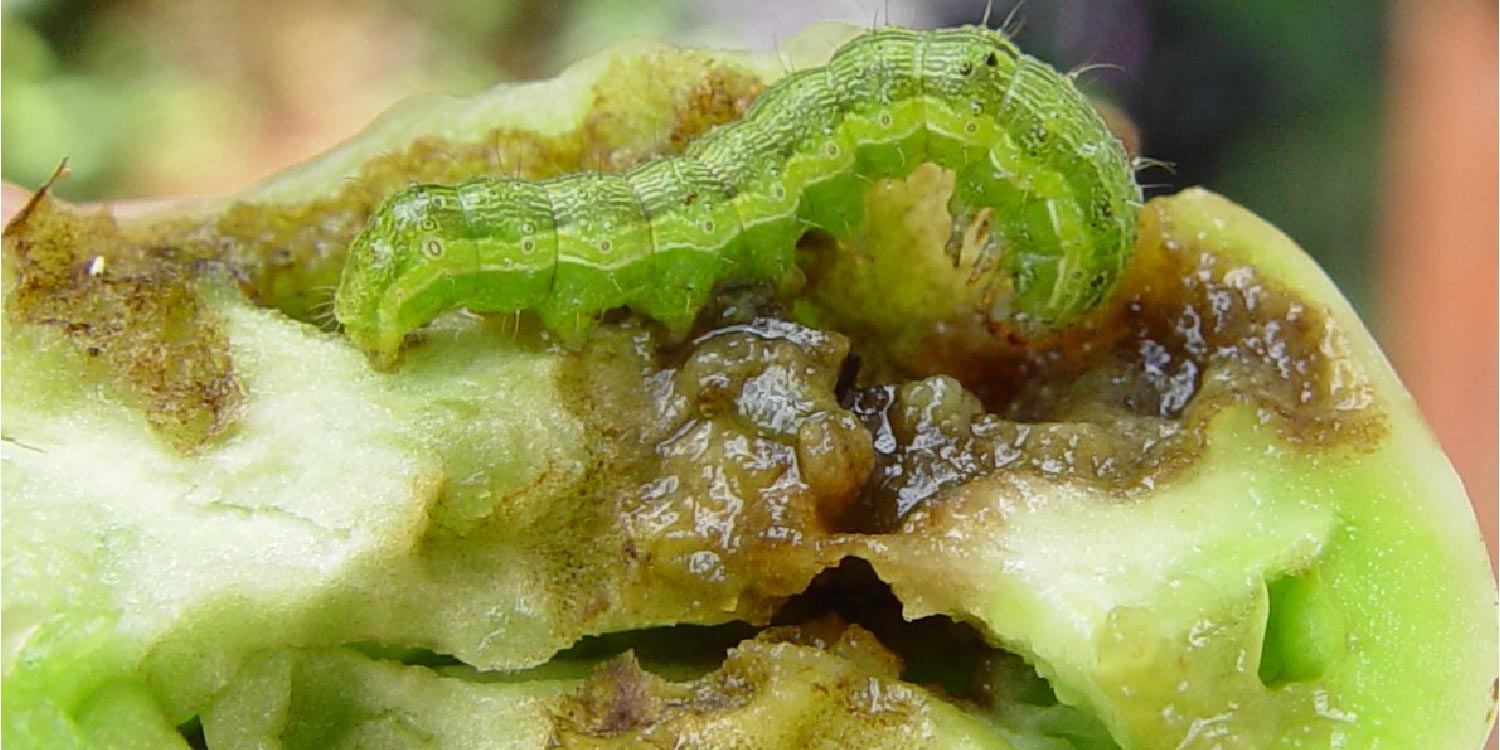
Heliothis
Helicoverpa Armigera
Pathogen:
Insect
Type:
Risk:
HIGH




DESCRIPTION
Pathogen description
Helicoverpa armigera, also known as the cotton or corn caterpillar, is a highly polyphagous pest that affects a wide variety of crops, including lettuce. Adults are pale brown moths with dark Taches on the forewings, which can fly great distances to search for suitable places to lay their eggs. Females can lay more than 1,000 eggs throughout their life, depositing them on young leaves or flower buds of plants. After hatching, the larvae begin to feed voraciously on plant tissue, going through six larval stages in which they increase considerably in size. Mature larvae can measure up to 4 cm and vary in color from green to brown, depending on the environment. When they complete their development, they descend to the ground to pupate in shallow chambers. Under favorable conditions, Helicoverpa armigera can have several generations per year, which complicates its control.
Disease description
In lettuce, the Helicoverpa armigera pest can cause severe damage to the leaves and tender parts of the plant. The larvae pierce and chew large sections of leaf tissue, reducing photosynthetic area and affecting overall growth. Furthermore, feeding of the larvae on the main shoot and young leaves can lead to deformations and affect the quality of the crop, making it less marketable.
- Leaves with irregular perforations.
- Presence of larvae in the shoots and young leaves.
- Severe damage to the outer leaves and bud.
- Withering and deformation of the leaves.
- Presence of dark excrements on the leaves.
- Reduced or delayed growth due to loss of leaf area.

TEMPERATURE AND HUMIDITY
22-30°C
60-80%

VOIES DE TRANSMISSION
Wind, movement of larvae between plants, migration of adults, contaminated transplants

Chemical treatments
CONTROL
• CHLORANTRANILIPROL 35% [WG] P/P
• DELTAMETHRIN 1.5% [EW] P/V
• DELTAMETHRIN 1.57% [SC] P/V
• DELTAMETHRIN 10% [EC] P/V
• DELTAMETHRIN 2.5% [EC] P/V
• DELTAMETHRIN 2.5% [EW] P/V
• LAMBDA CYHALOTHRIN 1.5% [CS] P/V
• LAMBDA CYHALOTHRIN 10% [CS] P/V
• LAMBDA CYHALOTHRIN 2.5% [WG] P/P
• METAFLUMIZONE 24% [SC] P/V
• SPINETORAM 2.5% [SC] P/V
Treatments authorized in organic farming
• LAMBDA CYHALOTHRIN 1.5% [CS] P/V
• LAMBDA CYHALOTHRIN 10% [CS] P/V
• LAMBDA CYHALOTHRIN 2.5% [WG] P/P
Biological control
• BACILLUS THURINGIENSIS AIZAWAI (ABTS-1857 strain, 540 g/kg) (15 million CLU/g) 54% [WG] P/P
• BACILLUS THURINGIENSIS AIZAWAI (STRAIN GC-91) 50% (3.05 X 10^13 SPORES/KG) [WP] P/P
• BACILLUS THURINGIENSIS AIZAWAI 50% [WG] P/P
• BACILLUS THURINGIENSIS KURSTAKI (STRAIN PB 54) (16x10E6 I.U./G) 8% [WP] P/P
• BACILLUS THURINGIENSIS KURSTAKI (STRAIN PB 54) 32% (32 MILLION IU/G) [WP] P/P
• BACILLUS THURINGIENSIS KURSTAKI (EG 2348) (24x106 I.U./G) 18.3% [SC] P/V
• HELICOVERPA ARMIGERA NUCLEOPOLYEDROVIRUS (7.5 X 10E12 OBs/L) 52% [SC] P/V. DSMZ strain: BV-0003
Preventive treatments
-
- Constantly monitor the crop to detect the presence of eggs and young larvae.
- Install pheromone traps to capture adult moths and reduce populations.
- Introduce natural enemies such as Chrysoperla spp. or parasitoids such as Trichogramma spp. for biological control.
- Apply biological insecticides such as Bacillus thuringiensis during the first larval stages.
- Practice crop rotation to interrupt the pest cycle and avoid the accumulation of populations.
- Manually eliminate visible larvae on plants during inspections.
- Implement physical barriers such as protective nets to prevent the entry of adult moths into the crop.
- Use varieties of lettuce that are more resistant or less attractive to the pest.
- Maintain cleanliness of the field, eliminating remains of previous crops where the pest could survive.
- Avoid excessive use of broad-spectrum insecticides to preserve natural enemies.
Recommendations
*The recommended treatments are recommendations based on the authorities' databases and do not replace in any way the guidelines established by the legislation of each country.





